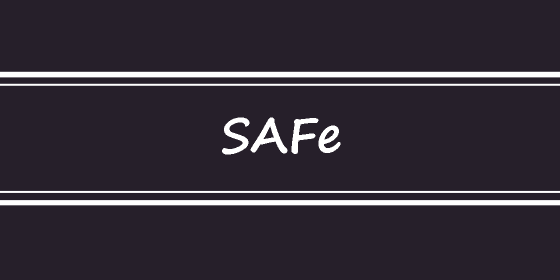SAFe

SAFe stands for “Scaled Agile Framework,” and it is a widely-used framework for implementing agile practices at scale in large organizations. SAFe provides a structured approach to scaling agile principles and methodologies to address the challenges of coordinating work across multiple teams, business units, and departments.
The main objectives of SAFe include:
- Alignment: SAFe promotes alignment among various teams and stakeholders by establishing a common understanding of goals, objectives, and priorities. It ensures that everyone is working towards the same strategic objectives.
- Collaboration: The framework emphasizes collaboration and cross-functional teamwork. It enables effective communication and cooperation between teams, facilitating a more seamless flow of work.
- Delivery of Value: SAFe focuses on delivering value to customers and end-users in a predictable and efficient manner. It encourages frequent and incremental releases of valuable products or features.
- Lean-Agile Principles: SAFe is based on lean and agile principles, emphasizing the reduction of waste, fast feedback cycles, continuous improvement, and empowering teams.
- Organizational Agility: SAFe helps organizations become more agile in their decision-making, adaptability, and responsiveness to changing market conditions.
Key components of SAFe include:
- Agile Release Train (ART): ART is the core of SAFe, representing a long-lived team of agile teams that work together to deliver value in a specific timeframe, typically a Program Increment (PI).
- PI Planning: PI Planning is a critical event in SAFe where all teams within the ART come together to plan and align their work for the upcoming Program Increment.
- Lean Portfolio Management: SAFe provides guidance on how to manage and prioritize work across the organization’s portfolio to maximize value delivery.
- Value Stream: SAFe encourages organizations to identify and optimize their value streams, focusing on improving the flow of value from idea to deployment.
SAFe offers different configurations to suit different organizational contexts, including Essential SAFe (for smaller organizations and teams), Portfolio SAFe (for larger enterprises), and Large Solution SAFe (for solutions that require multiple ARTs to collaborate).
Overall, SAFe provides a structured framework that enables organizations to scale agile practices effectively, align their teams and stakeholders, and deliver value more efficiently in a large-scale development environment.